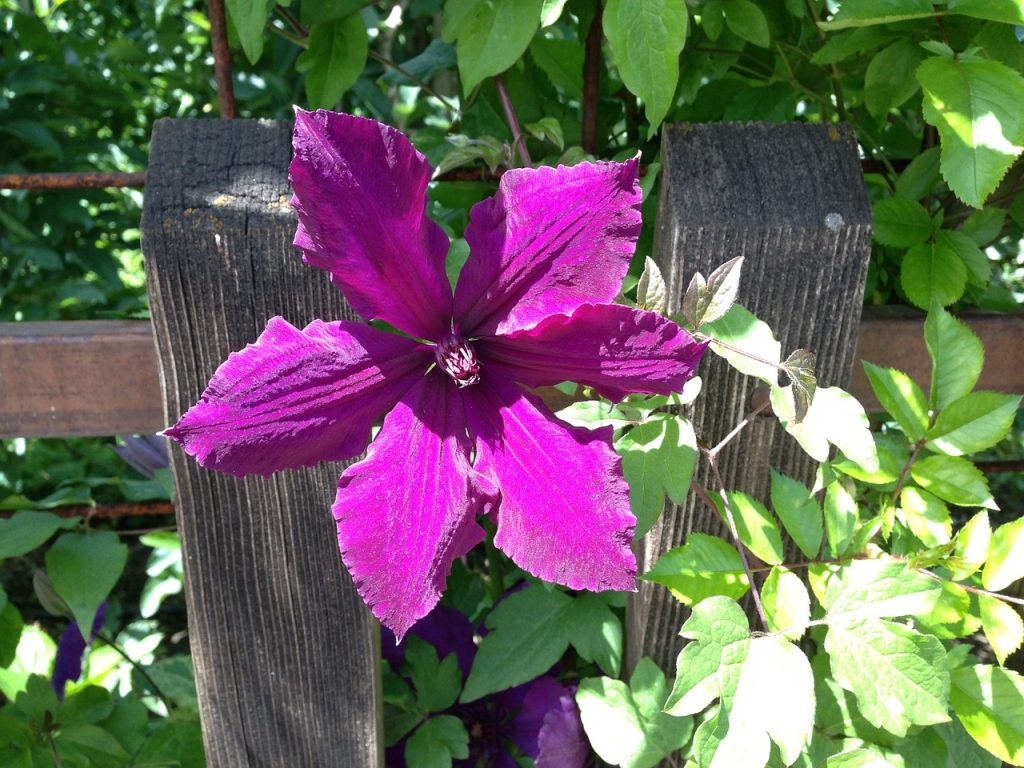Clematis Pruning Dilemmas and Jobs For May
Gardening is great exercise and there is really no need to join a gym. Instead of a weight lifting, try digging a few flower beds; it will soon build the muscles. No need for a treadmill, just get the lawnmower out. Gardening for just 30 minutes can burn off 250 calories, help increase flexibility, strengthen joints, decrease blood pressure, reduce stress and slow osteoporosis. And all of this with no membership fee and out in the fresh air – what more could anyone ask for.
Jobs for the garden
- Prune spring flowering shrubs after the blooms have faded, they will flower next year on the new
- growth they create this year.
- Feed and spray your roses for mildew, aphid, black-spot or other insect or disease problems.
- If you haven’t done so yet plant out summer bedding into borders, containers and hanging baskets
- Remember to feed your containers and hanging baskets weekly with a liquid feed such as Miracle Gro or Tomorite. Dead-head spent blooms regularly
- Stake tall plants and continue to tie in climbers, such as clematis and sweet pea.
- Begin to cut the grass regularly and fill in any bare spots by slightly loosening the surface of the soil
- and sow a good quality lawn seed over the area evenly
- Pinch out sideshoots on tomatoes and harvest lettuce, radish, other salads and early potatoes
- Keep on top of weeds by hoeing regularly in dry conditions.
Plant of the Month – Clematis

This is one of the most popular garden plants, they are a great way to add vertical colour
to your garden. There are lots of clematis varieties to choose from, one to suit every garden, from fast growing clematis that will quickly disguise unsightly walls and fences to slower growing varieties that can be used in small containers. They say there is a clematisthat flowers every month of the year but the most showy are the summer flowering varieties.
Clematis are generally divided into three main groups:
Group 1 are early flowering and will bloom in the winter or spring on the previous year’s growth.
they require little or no pruning. Most evergreen clematis belong to this group and they generally prefer a sunny and sheltered position in the garden. They include Clematis armandii and the vigorous montana’s.
Group 2 are deciduous flowering in late spring and early summer, on side shoots arising from the previous year’s growth. They can repeat flower in mid to late summer at the tips of the current season’s growth. Flowers are generally larger and showier such as the well-known Nelly Moser.
Group 3 is probably the largest group with late-flowering Clematis, including herbaceous clematis. They need hard pruning in early spring as they flower on this year’s growth. Well known for their large, showy flowers, there are also many smaller-flowered, viticella varieties. Something for everyone.
And if you don’t know which group yours is in, just remember – If it flowers before June – Don’t Prune!
This article is adapted from an original article by Gill Gallon
For collaboration and articles please Get In Touch
See more lifestyle articles from Bee Local Magazine












